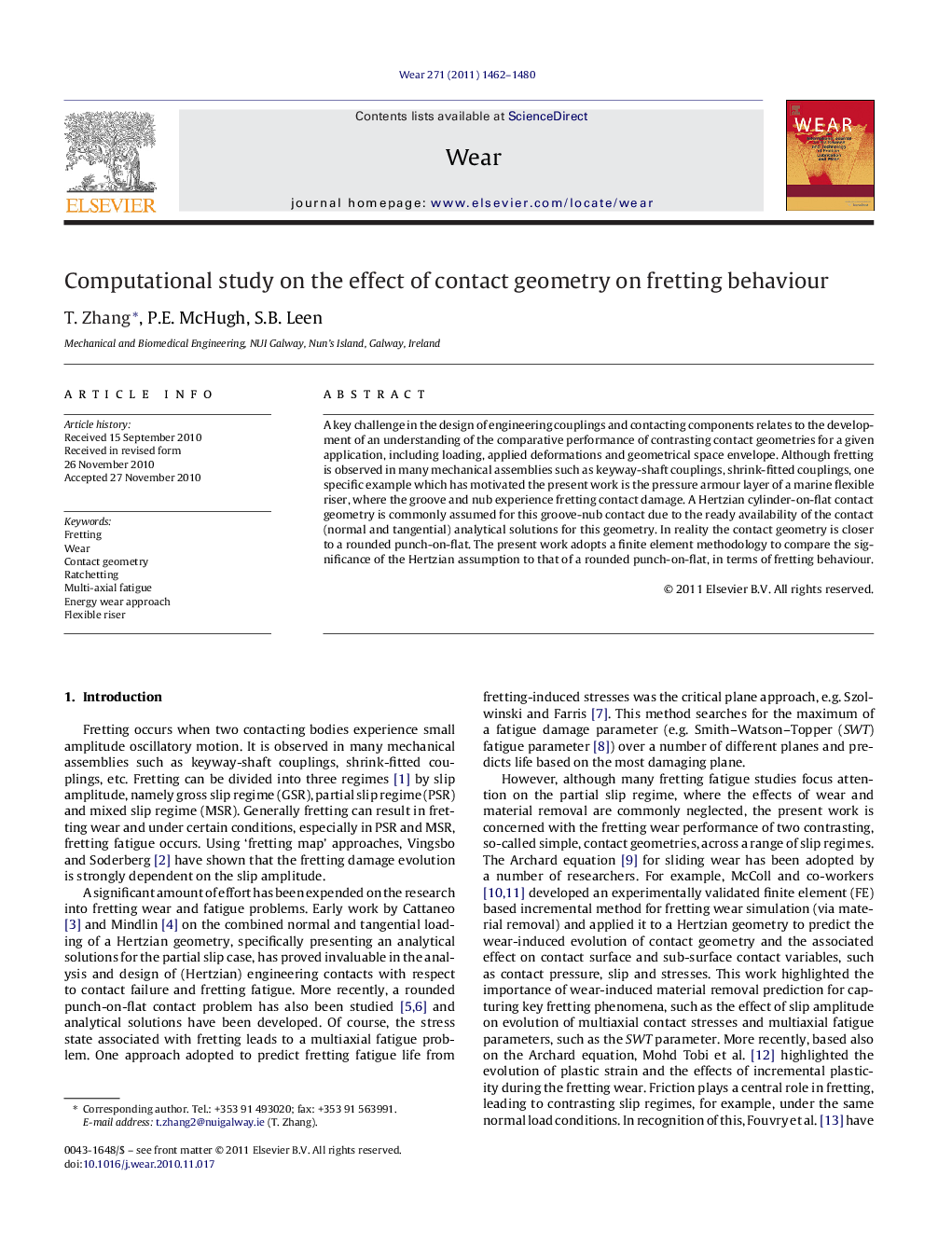| کد مقاله | کد نشریه | سال انتشار | مقاله انگلیسی | نسخه تمام متن |
|---|---|---|---|---|
| 618183 | 1455019 | 2011 | 19 صفحه PDF | دانلود رایگان |

A key challenge in the design of engineering couplings and contacting components relates to the development of an understanding of the comparative performance of contrasting contact geometries for a given application, including loading, applied deformations and geometrical space envelope. Although fretting is observed in many mechanical assemblies such as keyway-shaft couplings, shrink-fitted couplings, one specific example which has motivated the present work is the pressure armour layer of a marine flexible riser, where the groove and nub experience fretting contact damage. A Hertzian cylinder-on-flat contact geometry is commonly assumed for this groove-nub contact due to the ready availability of the contact (normal and tangential) analytical solutions for this geometry. In reality the contact geometry is closer to a rounded punch-on-flat. The present work adopts a finite element methodology to compare the significance of the Hertzian assumption to that of a rounded punch-on-flat, in terms of fretting behaviour.
► Implementation and validation of an energy-based wear simulation method for Ti–6Al–4V.
► Prediction of effect of fretting wear on fretting crack nucleation.
► Comparison of a Hertzian round on flat and rounded punch on flat geometry.
► Identification of key role of wear-induced ratchetting in fretting fracture.
Journal: Wear - Volume 271, Issues 9–10, 29 July 2011, Pages 1462–1480